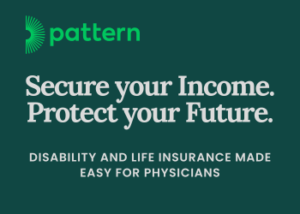“Active Shooter in Squirrel Hill.” This was the subject line of an email I received on the morning of the Tree of Life synagogue shooting. It was from my children’s school, which is located less than a mile from the scene of the shooting. “I am working … to put in place a plan for helping our students understand this situation in age-appropriate ways,” the school’s principal went on to say. Unfortunately, there simply are no age-appropriate ways to understand such a horrific act of violence and hatred. Even as an adult, I don’t understand it. How does the school, and how do I, tell my children that a man simply walked into a synagogue and began indiscriminately shooting peaceful worshipers?
Mass shootings in the United States are not a political issue — they are a public health one. Our country has had more mass shootings than any other country in history.
Since 2011, the rate at which public mass shootings occur has tripled. Defined as at least four people either injured or killed, thus far in 2018, there have been 366 mass shootings in the U.S. — on average, more than one each day. We, as health care providers, work to protect the public from preventable diseases; similarly, it is our duty and responsibility to work to protect the public by ending these preventable tragedies. The American College of Physicians, American College of Surgeons, American College of Obstetricians and Gynecologists, American Public Health Association, American Academy of Pediatrics, and American College of Emergency Physicians all have called for policies to reduce injuries and deaths from firearm injuries.
The shooter in the Tree of Life massacre used a semi-automatic assault weapon. How do we, as health care providers, rationalize a citizenry armed with weapons of war? How do we make sense of the fact that our federal government has allowed and continues to allow these tragedies to happen by not passing legislation ending the possession and sale of such weapons? Should Second Amendment rights supersede our: rights as Americans to safely worship at a synagogue (Tree of Life) or church (Sutherland Springs); the right for our children to go to school safely (Columbine High School, Virginia Tech, Sandy Hook Elementary, Umpqua Community College, Margerie Stoneman Douglas High School, Santa Fe High School); the right to attend a concert (Las Vegas); the right to go out to a nightclub (Orlando); or see a movie (Aurora)?
We live in a civilized society, and as such, we constantly must relinquish individual rights for the protection of the larger community. We have laws, rules, and regulations which serve to protect the public from public health threats — laws against natural gas drilling in an individual’s backyard, rules about responsible hazardous waste disposal and smoking bans in public enclosed areas, for example. Unfortunately, we are in a time where the unrestricted right to bear arms has led to senseless acts of violence against innocent people. Encouraging civilians to carry weapons to their places of worship, to work, and to their schools is not the answer. Doing so perpetuates a culture of fear and distrust that is counter to a healthy populace. In addition, common sense dictates that it’s unlikely that mass shootings would turn out differently if civilians were encouraged to carry guns, armed security guards were at every door post, and teachers came to school armed to fight. These proposed solutions ignore the obvious — the federal government enacting one of the many legislative proposals banning assault weapons.
Shortly after the San Bernardino and Orlando nightclub shootings, polls found that more than half of Americans supported a ban on assault weapons and according to data from the Pew Research Center, more than 65 percent of the public agree on the need for stricter gun laws. Despite this majority opinion, our government has not yet taken the action needed to save lives. Several states have passed successful legislation banning the purchase of assault weapons and to remove guns from those who pose a danger to others. As health care providers, it is our duty to advocate for these proposals and to speak out and take action against gun violence. Contact your members of Congress, send letters and emails, make phone calls, travel to your state capital, to Washington, D.C., and of course, vote.
As a child growing up in South Florida, my school had regular hurricane drills. Today, my children have school shooting drills. I never thought my community would experience one of the many horrific acts of gun violence this country has seen in the last decade. But then again, that’s probably what everyone thinks when they watch what seems like the never-ending news cycle of gun violence. That is, until they get the phone calls, text messages and emails that alert them to a shooting in their community. This is not about Pittsburgh, Squirrel Hill, or the Tree of Life Synagogue. It could have been your town, your place of worship. Do not wait until it happens in your backyard to take action not just as a health care provider but also as a human being.
Jennifer R. Marin is an pediatric emergency physician.
Image credit: Shutterstock.com





















![Rethinking patient payments: Why billing is the new frontline of patient care [PODCAST]](https://kevinmd.com/wp-content/uploads/Design-3-190x100.jpg)






![Alzheimer’s and the family: Opening the conversation with children [PODCAST]](https://kevinmd.com/wp-content/uploads/Design-4-190x100.jpg)


